Sultan Bashiruddin Mahmood is a Pakistani nuclear engineer and a scholar of Islamic studies. He was the subject of a criminal investigation launched by the Federal Investigation Agency (FIA) over unauthorized travel in Afghanistan prior to the September 11 attacks in 2001.
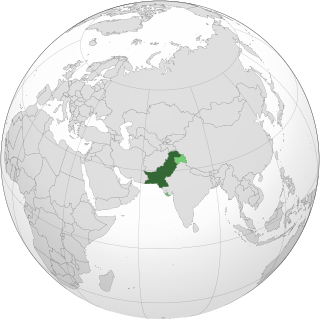
Pakistan is one of nine states to possess nuclear weapons. Pakistan began development of nuclear weapons in January 1972 under Prime Minister Zulfikar Ali Bhutto, who delegated the program to the Chairman of the Pakistan Atomic Energy Commission (PAEC) Munir Ahmad Khan with a commitment to having the device ready by the end of 1976. Since PAEC, which consisted of over twenty laboratories and projects under reactor physicist Munir Ahmad Khan, was falling behind schedule and having considerable difficulty producing fissile material, Abdul Qadeer Khan, a metallurgist working on centrifuge enrichment for Urenco, joined the program at the behest of the Bhutto administration by the end of 1974. As pointed out by Houston Wood, "The most difficult step in building a nuclear weapon is the production of fissile material"; as such, this work in producing fissile material as head of the Kahuta Project was pivotal to Pakistan developing the capability to detonate a nuclear weapon by the end of 1984.
Gabo Pat is a village to the west of Karachi, Pakistan. It extends along the Arabian Sea coast westwards from the harbour of Karachi until the border with Balochistan province, and forms the westernmost part of Karachi West district. The area is very lightly populated with small rural and fishing villages. Abdul Rehman Village is the largest fishing village of Gabopat, which lacks of basic facilities including health, education, electricity, gas etc.

Pakistan Atomic Energy Commission (PAEC) is a federally funded independent governmental agency, concerned with research and development of nuclear power, promotion of nuclear science, energy conservation and the peaceful usage of nuclear technology.

The Dr. A. Q. Khan Research Laboratories, or KRL for short, is a federally funded, multi-program national research institute and national laboratory site primarily dedicated to uranium enrichment, supercomputing and fluid mechanics. It is managed by the Ministry of Energy for the Government of Pakistan. The laboratory is located in Kahuta, a short distance north-east of Rawalpindi, Punjab, Pakistan.
The Karachi Nuclear Power Plant is a large commercial nuclear power plant located at the Paradise Point in Karachi, Sindh, Pakistan.
The Chashma Nuclear Power Plant, is a large commercial nuclear power plant located in the vicinities of Chashma colony and Kundian in Punjab in Pakistan.
As of 2022, nuclear power is provided by six commercial nuclear power plants in Pakistan. Pakistan is the first Muslim majority country in the world to construct and operate civil nuclear power plants. The Pakistan Atomic Energy Commission (PAEC), the scientific and nuclear governmental agency, is solely responsible for operating these power plants. As of 2018, the electricity generated by commercial nuclear power plants constitutes roughly 7.5% of electricity generated in Pakistan, Pakistan is not a party to the Nuclear Non-Proliferation Treaty but is a member of the International Atomic Energy Agency. Pakistan plans on constructing 32 nuclear power plants by 2050 and envisions 40,000 MW of nuclear power generation.
Electricity in Pakistan is generated, transmitted, distributed, and retail supplied by two vertically integrated public sector companies, Water and Power Development Authority (WAPDA) responsible for the production of hydroelectricity and supplied to the consumers by the power distribution companies (DISCOS) under the Pakistan Electric Power Company (PEPCO). Currently, there are 11 distribution companies and one National Transmission And Dispatch Company (NTDC) all in the public sector, and the Karachi Electric (K-Electric) for the city of Karachi and its surrounding areas. There are around 42 independent power producers (IPPs) that contribute significantly in electricity generation in Pakistan.
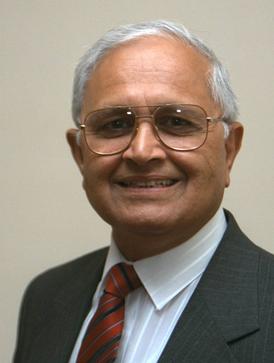
Munir Ahmad Khan, NI, HI, FPAS, was a Pakistani nuclear reactor physicist who is credited, among others, with being the "father of the atomic bomb program" of Pakistan for their leading role in developing their nation's nuclear weapons during the successive years after the war with India in 1971.

Parvez Butt, is a Pakistani mechanical engineer and public official who served as the chairman of the Pakistan Atomic Energy Commission from 2001 till 2006.

Ishrat Hussain Usmani NI, best known as I. H. Usmani, was a Pakistani atomic physicist, and later a public official who chaired the Pakistan Atomic Energy Commission (PAEC) from 1960 to 1971 as well as overseeing the establishment of the Space Research Commission.
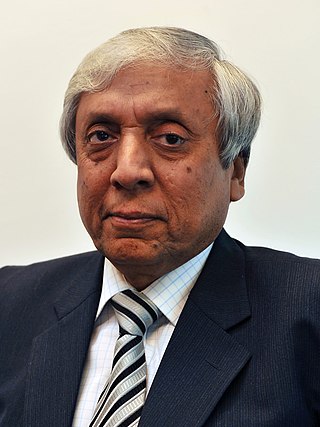
Ansar Pervaiz, also spelled as, HI, is a Pakistani scientist and a nuclear engineer who was the former chairman of the Pakistan Atomic Energy Commission (PAEC), and former chairman of the Board of Governors of International Atomic Energy Agency (IAEA). Pervaiz is widely given credit for establishing the nuclear engineering, nuclear physics and nuclear technology institutes within Pakistan.
Muhammad Hafeez Qureshi, SI, HI, known as Hafeez Qureshi, was a Pakistani nuclear scientist and a mechanical engineer, known for his classified work at WGS at the Pakistan Atomic Energy Commission (PAEC).

Abdul Hameed Nayyar, also known as A.H. Nayyar, is a Pakistani physicist, author, and a freelance consultant on the issues of education, nuclear safety, and energy. His field of specialization is in the physics of condensed matter, and served in the faculties of the Quaid-e-Azam University in Islamabad from 1973 till 2005 and the Lahore University of Management Sciences. Nayyar is known for voicing for education reforms and military arms control, which he directed research programs at the Sustainable Development Policy Institute in Islamabad.
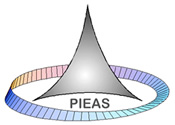
The Pakistan Institute of Engineering and Applied Sciences (PIEAS), is a public research university located in Islamabad, Pakistan. The university is modelled on international standards with a strong focus on the scientific advancement of the nuclear science-related STEM fields and medical sciences.
Naeem Ahmad Khan, FPAS, was a Pakistani nuclear physicist and a professor of physics who was known for his work in developing techniques using the solid-state nuclear track detector and solid-state nuclear magnetic resonance. Although he worked with the Government of Pakistan for most of his career, he also taught physics at a number of Pakistani universities and was the civilian scientist of the Pakistan Air Force (PAF) until his death.
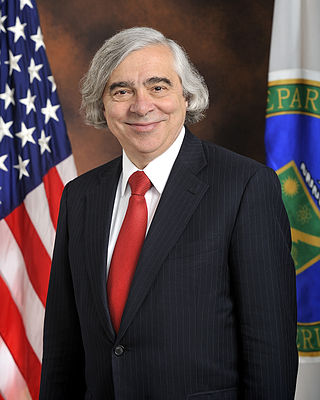
Ernest Jeffrey Moniz, GCIH is an American nuclear physicist and former government official. From May 2013 to January 2017, he served as the 13th United States secretary of Energy in the Obama Administration. Prior to this, Moniz served as associate director for science in the Office of Science and Technology Policy in the Executive Office of the President of the United States from 1995 to 1997 and undersecretary of energy from 1997 to 2001 during the Clinton Administration. He is currently the co-chair and CEO of the Nuclear Threat Initiative (NTI), as well as president and CEO of the Energy Futures Initiative (EFI), a nonprofit organization working on climate and energy technology issues, which he co-founded in 2017.
Iqbal Hussain Qureshi 27 September 1937 – 8 December 2012) SI, FPAS, best known as I.H. Qureshi, was a Pakistani nuclear chemist and an Emeritus professor of chemistry at the University of Karachi. Qureshi was the principal contributor of scientific understanding of various chemical elements: bismuth, cobalt, strontium, thallium, tritium, iron, rubidium, and zinc.
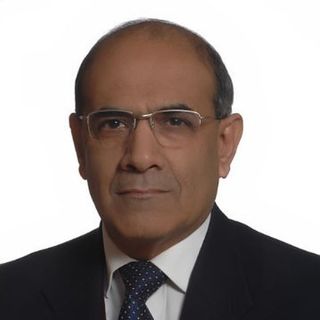
Syed Mohammad Anwar Habib is a Pakistani electrical engineer who served as the Chairman of the Pakistan Nuclear Regulatory Authority (PNRA) from 2009 until 2017.










